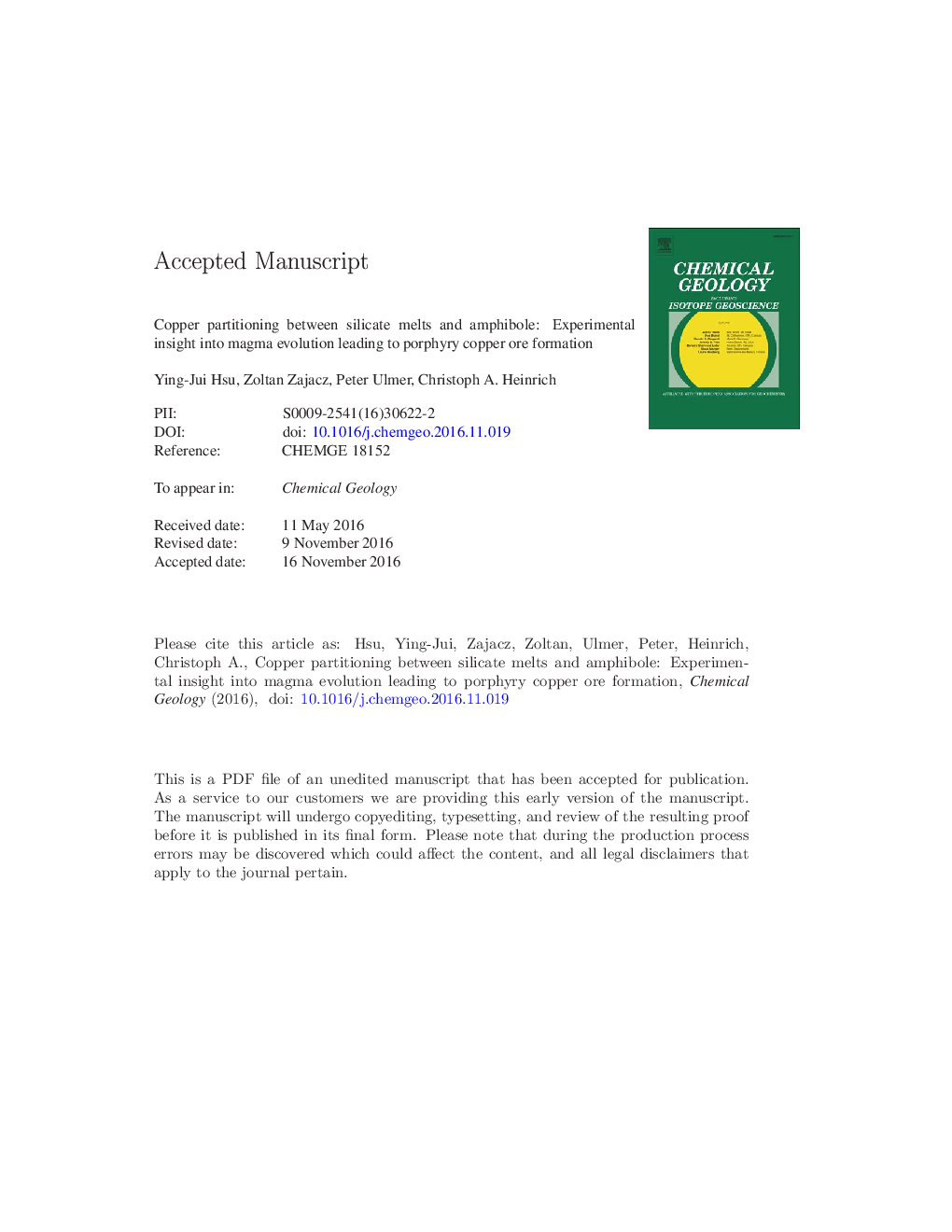| Article ID | Journal | Published Year | Pages | File Type |
|---|---|---|---|---|
| 5782936 | Chemical Geology | 2017 | 62 Pages |
Abstract
The low DCu (amph/melt) value suggests that amphibole crystallizing at any stage of calc-alkaline magma evolution is unable to scavenge a significant fraction of the initially available Cu from the melt. However, DCu (amph/melt) is high enough to yield precisely measurable Cu concentrations in natural amphiboles. As DCu (amph/melt) remains constant along the liquid line of descent of calc-alkaline magmas, amphibole compositions may thus be used as a proxy to monitor the evolution of the Cu concentration in the silicate melt (not the bulk magma if sulfide is present). This may be useful for understanding the metallogenic evolution of intrusive rocks, in which silicate melt inclusions in minerals are generally absent. As most porphyry-type Cu ore deposits are associated with upper crustal intrusions, in-situ microanalysis of inclusion-free amphiboles in such rocks may help understand ore genesis and might also be used in mineral exploration to assess the fertility of prospective magmatic systems.
Related Topics
Physical Sciences and Engineering
Earth and Planetary Sciences
Geochemistry and Petrology
Authors
Ying-Jui Hsu, Zoltán Zajacz, Peter Ulmer, Christoph A. Heinrich,
